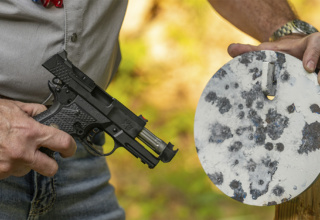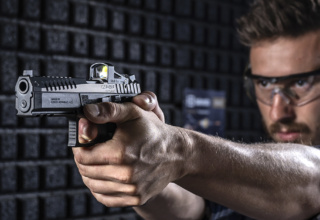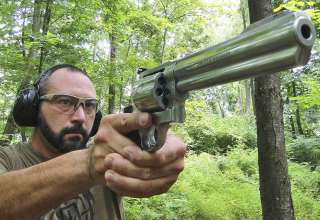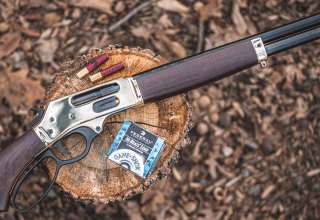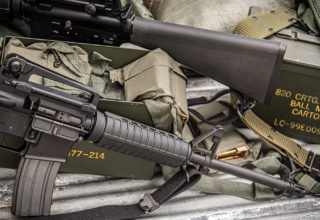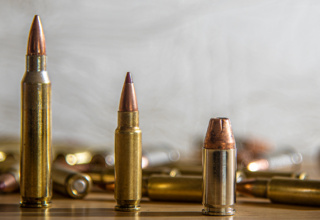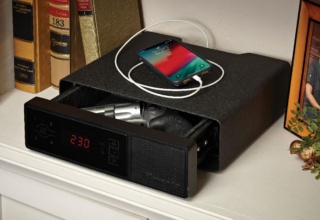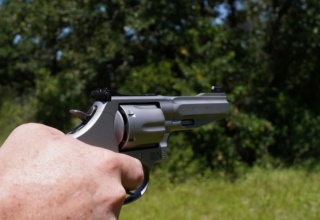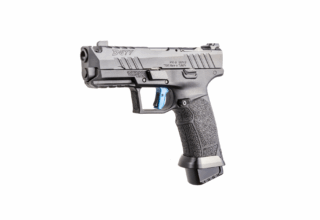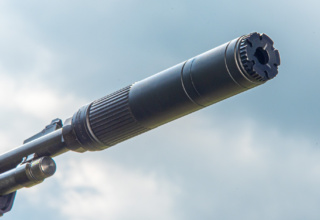Record numbers of first-time gun owners concerned about personal and family safety are looking for guidance. A certified firearms trainer explains what to do next.
by Frank Melloni
Shortly before the COVID-19 pandemic included the “stay-at-home” protocol, many Americans purchased their first firearm. I understand many of those new gun owners are confused regarding what exactly they purchased and more importantly, how to properly use it.
My first firearm purchase was conducted without the best information and certainly on a shoestring budget — a less than ideal situation. While the overall experience was rife with insufficiencies, nothing was more lacking than the availability of training and information once I had my gun in hand. I am a New York resident, and Long Island, at the time, was not exactly rich in the gun culture. The only resources I had were friends that were equally uneducated. Thus, nothing makes me happier than to help those who find themselves in the same spot I was once in more than 20 years ago.
Here are the first five things you need do now that you have entered the firearms-owning community:
Secure That Gun!
I can’t tell you how many “experts” advised that I leave my gun “ready to go” in a nightstand, under my pillow, behind a door, or in any other location that is equally unsafe. While this may have been borderline acceptable forty years ago, today, there is a plethora of quick-access safes on the market. These safes allow you to keep your firearm in a more ready condition while still being able to access it quickly in an emergency.

When it comes to the condition in which you should store a defensive firearm, I won’t tell you whether the gun should be loaded or not. Nobody can tell you that. This is a decision that every homeowner needs to make for themselves, as each living situation is unique.
I would like to express, though, the folly of an unsecured firearm in a commonly overlooked scenario: walking in on a burglary in progress.
If you do not secure your firearm, the intruder could likely arm himself with your gun and use it against you. Should you be worried that you can’t access your gun in time, there is nothing wrong with wearing it in your home, especially during uncertain times such as these.
Get Some Basic Training
You are going to want to get some fundamental firearm training as soon as possible. As of this writing, many outlets for firearms training are closed, but that doesn’t green-light ignorance. Numerous instruction companies have online training programs that will walk you through the basic function of your firearm. Even the NRA has a digital offering of their Basic Pistol Course that will get you on the right track. I urge everyone to be wary of YouTube videos unless you are watching the channel of a member with easily verifiable credentials.
Those attempting to load a gun outside of a range setting are urged to do so only with Snap Caps or dummy rounds until they are confident they can load without causing a negligent discharge. Snap Caps and dummy rounds can be ordered from several online retailers and shipped right to your door. Both these devices are built to the same dimensions as their live ammunition counterparts but do not contain any live primers or gunpowder. In addition to learning how to load and unload your firearms, these are an invaluable training tool during live-fire exercises.
Learn the Three Rules of Safe Firearms Handling
When I teach the three rules of safe firearms handling, it takes less than eight minutes to go through in its entirety. The reason this portion of our classes is so short isn’t because we think it’s boring and it isn’t because we think it unnecessary. The reason this goes by so fast is that it is brutally simple to be safe with a firearm as long as we follow these basic steps.
First and foremost, always keep the muzzle pointed in a safe direction. The muzzle is the very tip of the barrel where the bullet exits. On the range, that is going to be always pointed at the backstop, straight up, or straight down (depending on that particular range’s rules). Whenever moving a firearm, we need to think about each move BEFORE we make it and plan a path for our muzzle to ensure it NEVER sweeps a person or property. There is NO exception to this rule. It doesn’t matter if the gun is “unloaded” or “on safe” — develop the idea right away that we treat every gun as if it is loaded. In your house, it’s important to know which walls have people on the other side of them as well as if up and/or down are safe directions. Second levels and basements often consist of living space.
The second rule of firearms safety is, in my opinion, the hardest to learn, as it requires the development of muscle memory. This rule is simply stated as, “Keep your finger off the trigger until ready to fire.” You see, guns are designed to put your finger instinctually on the trigger. This way, you can find it quickly in an emergency without having to fumble. Every shooter needs to learn to place their finger ABOVE the entire trigger guard and keep it there until a target is identified, sights are on it, and it is time to fire a round. No matter how much pressure it takes to discharge the firearm, a trigger is NEVER a safe location to rest your finger.
Rule number three is ammunition-related and is, “Never load your gun until ready to shoot.” Yes, this rule is expressly talking about sporting use, but what about defense? Well, a defensive firearm can only defend you when it is under your control (in your hands, in a holster, locked in a safe, or on your person via a sling). Therefore, if you are putting ammunition in a firearm, understand that it should always be under your control. Also, remember the backside of this rule and unload any gun the moment it is no longer in use.
Advance Your Training
As much as some might wish the idea of, “I’ll just buy it, lock it up, and it’ll be there when I need it,” were a reality, it simply isn’t true. Being able to successfully use a firearm to defend yourself and your family requires a fair bit of training. After a basic level course, consider an intermediate and advanced defensive shooting course in the platform that you have selected for this role. These courses are informative and allow you to conduct realistic live-fire practice drills that normally aren’t available in a static target shooting range. Also, consider a state-accredited Concealed Carry Weapons Permit course, as these will expand your opportunities to carry your firearm and they are chock full of information about realistic encounters with a threat.
Practice, Practice, Practice
Shooting is a highly perishable skill. I personally see a major decline in my speed and ability if I let so much as a month go by without even a short practice session.
At first, it is a good idea to get to the range weekly with your new tool and then maybe cut it back to monthly. If you haven’t already done so, it’s not a bad idea to consider a defensive firearm that is also inexpensive and fun to shoot. Expanding your network to include other gun owners also makes it easier to get to the range, as it quickly becomes a social event. Shooting should never be work!
Of course, with the ranges closed, this is not a reality for the immediate future, so now is a perfect time to develop your dry-fire training routine. Dry-fire training is the practice of manipulating your gun and squeezing the trigger WITHOUT any ammunition in the chamber or the magazine, and none in the immediate area, either. Tools like SureStrike™ Laser Cartridges and/or the Smokeless Range® from Laser Ammo aid in this by projecting a laser beam that lets you see where your shot would have impacted, and they can also be used in simulated defensive scenarios.
Above all, we welcome you to the firearms community! You have made a decision that speaks to your willingness to survive and your dedication to the personal responsibility that is self-protection. The tool that you have decided to bring into your house is no more than that — a tool. With it and with a proper mindset and training, you are the weapon.
About the Author: Frank Melloni entered the firearms industry via History Channel’s TOP SHOT in 2012. Since then, he has opened Renaissance Firearms Instruction and, with the help of over a dozen instructors, trains several thousand students a year in the safe and effective use of firearms in nearly every discipline. When Frank isn’t teaching or shooting, he spends his time writing articles that span a wide variety of subject matter.







